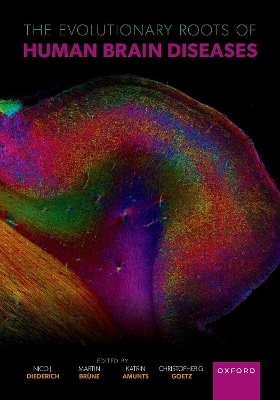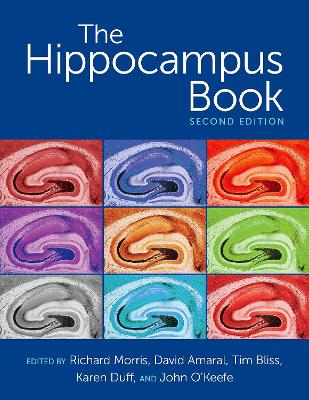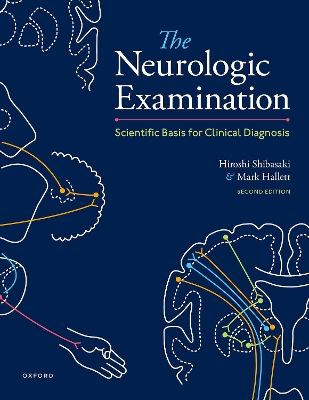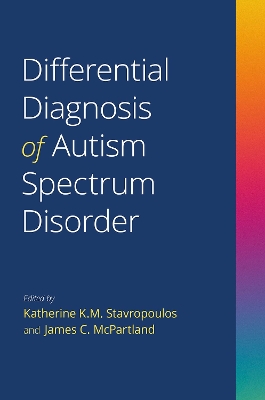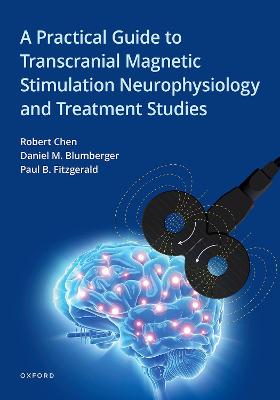Electroencephalography
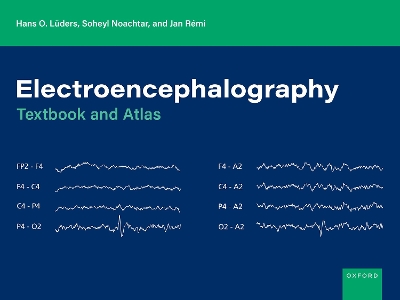 -10%
portes grátis
-10%
portes grátis
Electroencephalography
Textbook and Atlas
Remi, Jan; Lueders, Hans O.; Noachtar, Soheyl
Oxford University Press Inc
11/2024
520
Dura
Inglês
9780197502334
Pré-lançamento - envio 15 a 20 dias após a sua edição
Section 2: Fundamentals of EEG
2.1 Biological Basis of EEG
2.1.1 Source of EEG signal
2.1.1.1 Action Potentials
2.1.1.2 Synaptic Potentials
2.1.1.3 Spatial Arrangement of Electric Fields
2.1.2 Fundamentals of Rhythmic EEG Activity
2.2 Physical and Technical Fundaments of EEG
2.2.1 Technical Structure
2.2.1.1 Electrodes and Skin Contact
2.2.1.3 Differential Amplifier
2.2.1.4 Analog-to-Digital (AD) Conversion
2.2.1.5 Video
2.2.1.6 Electrical Safety
2.2.2 Technical Characteristics of EEG Recording
2.2.2.1 EEG Filters
2.2.2.1.1 Electrotechnical Basis of Filters
2.2.2.1.2 Phase Shift Due to Filters
2.2.2.1.3 Recommended Filter Settings
2.2.2.2 Editing the Digital EEG
2.2.2.2.1 Reformatting
2.2.2.2.2 Referential Montages
2.2.2.2.3 Bipolar Montages
2.2.2.2.4 Source Analysis and Mapping
2.2.2.2.5 Automatic Spike Detection
2.2.2.2.6 Automatic Seizure Detection
2.2.2.2.7 Long term EEG monitoring
2.2.3 Localization of EEG Potentials
2.2.3.1 Polarity Convention
2.2.3.2 Systematic Approach to Localization of EEG Potentials
2.2.3.3 Advantages and Disadvantages of Bipolar and Referential Montages
2.2.3.4 Localization of Asymmetries
2.3 Artifacts
2.3.1 Non-biological Artifacts
2.3.1.1 Electrode Artifacts
2.3.1.2 Ballistic Artifacts
2.3.1.3 Open Channel
2.3.1.4 External Artifacts
2.3.2 Biological Artifacts
2.3.2.1 Bulb Movements
2.3.2.2 Muscle Artifacts
2.3.2.3 Glossokinetic Artifacts
2.3.2.4 Eye Muscle Artifacts
2.3.2.5 ECG Artifacts
3 Clinical Electroencephalography
3.1 Recording of EEG
3.1.1 Default Settings for EEG Recording
3.1.2 Recording of Newborn EEGs
3.2 Activation Methods
3.2.1 Hyperventilation
3.2.2 Photic Stimulation
3.2.3 Sleep and Sleep Deprivation
3.2.4 Eye Closure
3.3 EEG Reading
3.3.1 Description of Abnormal EEG
3.3.1.1 Frequency
3.3.1.2 Amplitude
3.3.1.3 Localization
3.3.1.4 Shape and Temporal Behavior
3.3.1.5 Responsiveness / Reactivity
3.3.2 Reporting of EEG
3.4 EEG Classification
3.4.1 Normal Patterns
3.4.1.1 Physiological Wake EEG
3.4.1.1.1 Posterior Alpha-Activity
3.4.1.1.2 Central ?-Activity
3.4.1.1.3 Frontal Beta Activity
3.4.1.1.4 Temporal Theta Activity
3.4.1.2 Physiological Sleep EEG
3.4.2 Abnormal EEG
3.4.2.1 Degree of EEG Abnormality
3.4.2.2 State of Consciousness
3.4.2.3 Slow and Suppression
3.4.2.3.1 Background Slow (BS)
3.4.2.3.2 Intermittent Slow (IS)
3.4.2.3.2.1 Intermittent Rhythmic Slow (IRS)
3.4.2.3.2.2 Temporal Slow of the Elderly
3.4.2.3.2.3 Hypnagogic/Hypnopompic Theta-Delta-Bursts
3.4.2.3.2.4 Occipital Slow of Youth
3.4.2.3.2.5 Eye Closure Activity
3.4.2.3.2.6 Rhythmical Temporal Theta Bursts of Drowsiness
3.4.2.3.2.7 Rhythmical Midline Theta
3.4.2.3.3 Background Attenuation (BA)
3.4.2.3.4 Background Suppression (BSU)
3.4.2.3.5 Electrocerebral Silence (ECS)
3.4.2.4 Epileptiform Discharges (ED)
3.4.2.4.1 Spikes (SP)
3.4.2.4.2 Polyspikes (PSP) and Paroxysmal Fast (PF)
3.4.2.4.3 Benign Focal Epileptiform Discharges (BFED)
3.4.2.4.4 Spike-waves (SW)
3.4.2.4.5 Polyspike-Waves (PSW)
3.4.2.4.6 Three Hz Spike-Waves (3SW)
3.4.2.4.7 Slow-Spike-Waves (SSW)
3.4.2.4.8 Hypsarrhythmia (HYP)
3.4.2.4.9 Photoparoxysmal Response (PR)
3.4.2.4.10 Seizure Patterns (SEP)
3.4.2.4.10.1 Semiological Seizure Classification
3.4.2.4.11 Status Patterns (STP)
3.4.2.4.12 Differential Diagnoses of Interictal Epileptiform Discharges
3.4.2.4.12.1 Wicket Spikes
3.4.2.4.12.2 Asymmetry, Increased Background
3.4.2.4.12.3 Benign Epileptiform Transients of Sleep (BETS)
3.4.2.4.12.4 14 & 6 Hz Positive Spikes
3.4.2.4.12.5 6 Hz "Phantom" Spike and Wave
3.4.2.5 Periodic Patterns (PP)
3.4.2.5.1 Periodic Discharges
3.4.2.5.2 Periodic Epileptiform Discharges (PED)
3.4.2.5.3 Triphasic Waves (TW)
3.4.2.5.4 Burst Suppression (BUS)
3.4.2.5.5 Burst Attenuation (BUA)
3.4.2.6 Differentiation of Non-Convulsive Status Epilepticus and Encephalopathies
3.4.2.7 Special Patterns
3.4.2.7.1 Excessive Beta (EB)
3.4.2.7.2 Asymmetry (ASY)
3.4.2.7.3 Sleep-Onset-REM (SOREM)
3.4.2.8 Special Patterns in Stupor and Coma
3.4.2.8.1 Alpha-Coma (AK) and Alpha-Stupor (AS)
3.4.2.8.2 Spindle-Coma (SK) and Spindle-Stupor (SS)
3.4.2.8.3 Beta-Coma (BK) and Beta-Stupor (BS)
3.4.2.8.4 Theta-Coma (TK) and Theta-Stupor (TS)
3.4.2.8.5 Delta-Coma (DK) and Delta-Stupor (DS)
Appendix 1: EEG Guidelines of the American Clinical Neurophysiological Society (ACNS)
Appendix 2: Semiological Seizure Classification
References
Section 2: Fundamentals of EEG
2.1 Biological Basis of EEG
2.1.1 Source of EEG signal
2.1.1.1 Action Potentials
2.1.1.2 Synaptic Potentials
2.1.1.3 Spatial Arrangement of Electric Fields
2.1.2 Fundamentals of Rhythmic EEG Activity
2.2 Physical and Technical Fundaments of EEG
2.2.1 Technical Structure
2.2.1.1 Electrodes and Skin Contact
2.2.1.3 Differential Amplifier
2.2.1.4 Analog-to-Digital (AD) Conversion
2.2.1.5 Video
2.2.1.6 Electrical Safety
2.2.2 Technical Characteristics of EEG Recording
2.2.2.1 EEG Filters
2.2.2.1.1 Electrotechnical Basis of Filters
2.2.2.1.2 Phase Shift Due to Filters
2.2.2.1.3 Recommended Filter Settings
2.2.2.2 Editing the Digital EEG
2.2.2.2.1 Reformatting
2.2.2.2.2 Referential Montages
2.2.2.2.3 Bipolar Montages
2.2.2.2.4 Source Analysis and Mapping
2.2.2.2.5 Automatic Spike Detection
2.2.2.2.6 Automatic Seizure Detection
2.2.2.2.7 Long term EEG monitoring
2.2.3 Localization of EEG Potentials
2.2.3.1 Polarity Convention
2.2.3.2 Systematic Approach to Localization of EEG Potentials
2.2.3.3 Advantages and Disadvantages of Bipolar and Referential Montages
2.2.3.4 Localization of Asymmetries
2.3 Artifacts
2.3.1 Non-biological Artifacts
2.3.1.1 Electrode Artifacts
2.3.1.2 Ballistic Artifacts
2.3.1.3 Open Channel
2.3.1.4 External Artifacts
2.3.2 Biological Artifacts
2.3.2.1 Bulb Movements
2.3.2.2 Muscle Artifacts
2.3.2.3 Glossokinetic Artifacts
2.3.2.4 Eye Muscle Artifacts
2.3.2.5 ECG Artifacts
3 Clinical Electroencephalography
3.1 Recording of EEG
3.1.1 Default Settings for EEG Recording
3.1.2 Recording of Newborn EEGs
3.2 Activation Methods
3.2.1 Hyperventilation
3.2.2 Photic Stimulation
3.2.3 Sleep and Sleep Deprivation
3.2.4 Eye Closure
3.3 EEG Reading
3.3.1 Description of Abnormal EEG
3.3.1.1 Frequency
3.3.1.2 Amplitude
3.3.1.3 Localization
3.3.1.4 Shape and Temporal Behavior
3.3.1.5 Responsiveness / Reactivity
3.3.2 Reporting of EEG
3.4 EEG Classification
3.4.1 Normal Patterns
3.4.1.1 Physiological Wake EEG
3.4.1.1.1 Posterior Alpha-Activity
3.4.1.1.2 Central ?-Activity
3.4.1.1.3 Frontal Beta Activity
3.4.1.1.4 Temporal Theta Activity
3.4.1.2 Physiological Sleep EEG
3.4.2 Abnormal EEG
3.4.2.1 Degree of EEG Abnormality
3.4.2.2 State of Consciousness
3.4.2.3 Slow and Suppression
3.4.2.3.1 Background Slow (BS)
3.4.2.3.2 Intermittent Slow (IS)
3.4.2.3.2.1 Intermittent Rhythmic Slow (IRS)
3.4.2.3.2.2 Temporal Slow of the Elderly
3.4.2.3.2.3 Hypnagogic/Hypnopompic Theta-Delta-Bursts
3.4.2.3.2.4 Occipital Slow of Youth
3.4.2.3.2.5 Eye Closure Activity
3.4.2.3.2.6 Rhythmical Temporal Theta Bursts of Drowsiness
3.4.2.3.2.7 Rhythmical Midline Theta
3.4.2.3.3 Background Attenuation (BA)
3.4.2.3.4 Background Suppression (BSU)
3.4.2.3.5 Electrocerebral Silence (ECS)
3.4.2.4 Epileptiform Discharges (ED)
3.4.2.4.1 Spikes (SP)
3.4.2.4.2 Polyspikes (PSP) and Paroxysmal Fast (PF)
3.4.2.4.3 Benign Focal Epileptiform Discharges (BFED)
3.4.2.4.4 Spike-waves (SW)
3.4.2.4.5 Polyspike-Waves (PSW)
3.4.2.4.6 Three Hz Spike-Waves (3SW)
3.4.2.4.7 Slow-Spike-Waves (SSW)
3.4.2.4.8 Hypsarrhythmia (HYP)
3.4.2.4.9 Photoparoxysmal Response (PR)
3.4.2.4.10 Seizure Patterns (SEP)
3.4.2.4.10.1 Semiological Seizure Classification
3.4.2.4.11 Status Patterns (STP)
3.4.2.4.12 Differential Diagnoses of Interictal Epileptiform Discharges
3.4.2.4.12.1 Wicket Spikes
3.4.2.4.12.2 Asymmetry, Increased Background
3.4.2.4.12.3 Benign Epileptiform Transients of Sleep (BETS)
3.4.2.4.12.4 14 & 6 Hz Positive Spikes
3.4.2.4.12.5 6 Hz "Phantom" Spike and Wave
3.4.2.5 Periodic Patterns (PP)
3.4.2.5.1 Periodic Discharges
3.4.2.5.2 Periodic Epileptiform Discharges (PED)
3.4.2.5.3 Triphasic Waves (TW)
3.4.2.5.4 Burst Suppression (BUS)
3.4.2.5.5 Burst Attenuation (BUA)
3.4.2.6 Differentiation of Non-Convulsive Status Epilepticus and Encephalopathies
3.4.2.7 Special Patterns
3.4.2.7.1 Excessive Beta (EB)
3.4.2.7.2 Asymmetry (ASY)
3.4.2.7.3 Sleep-Onset-REM (SOREM)
3.4.2.8 Special Patterns in Stupor and Coma
3.4.2.8.1 Alpha-Coma (AK) and Alpha-Stupor (AS)
3.4.2.8.2 Spindle-Coma (SK) and Spindle-Stupor (SS)
3.4.2.8.3 Beta-Coma (BK) and Beta-Stupor (BS)
3.4.2.8.4 Theta-Coma (TK) and Theta-Stupor (TS)
3.4.2.8.5 Delta-Coma (DK) and Delta-Stupor (DS)
Appendix 1: EEG Guidelines of the American Clinical Neurophysiological Society (ACNS)
Appendix 2: Semiological Seizure Classification
References

